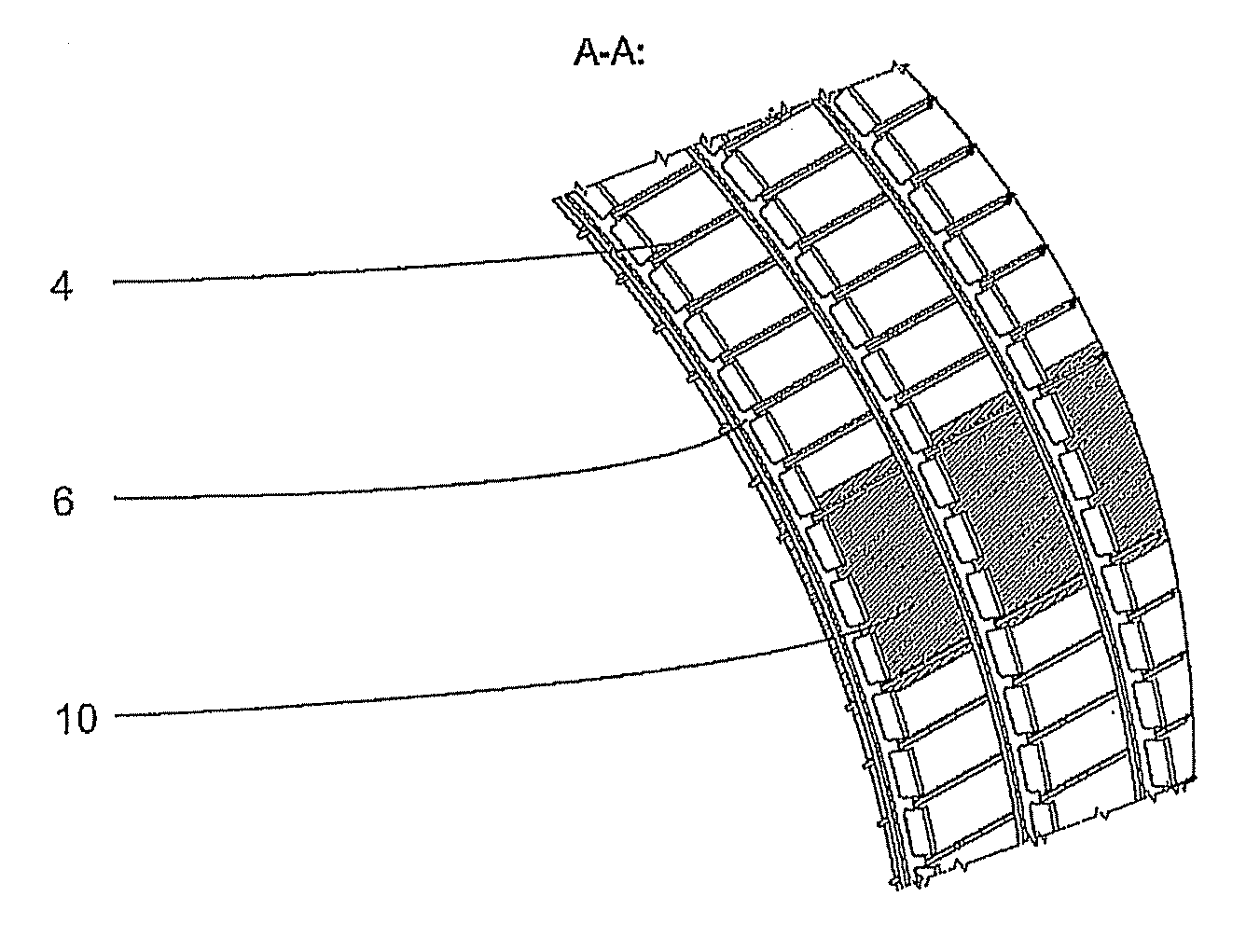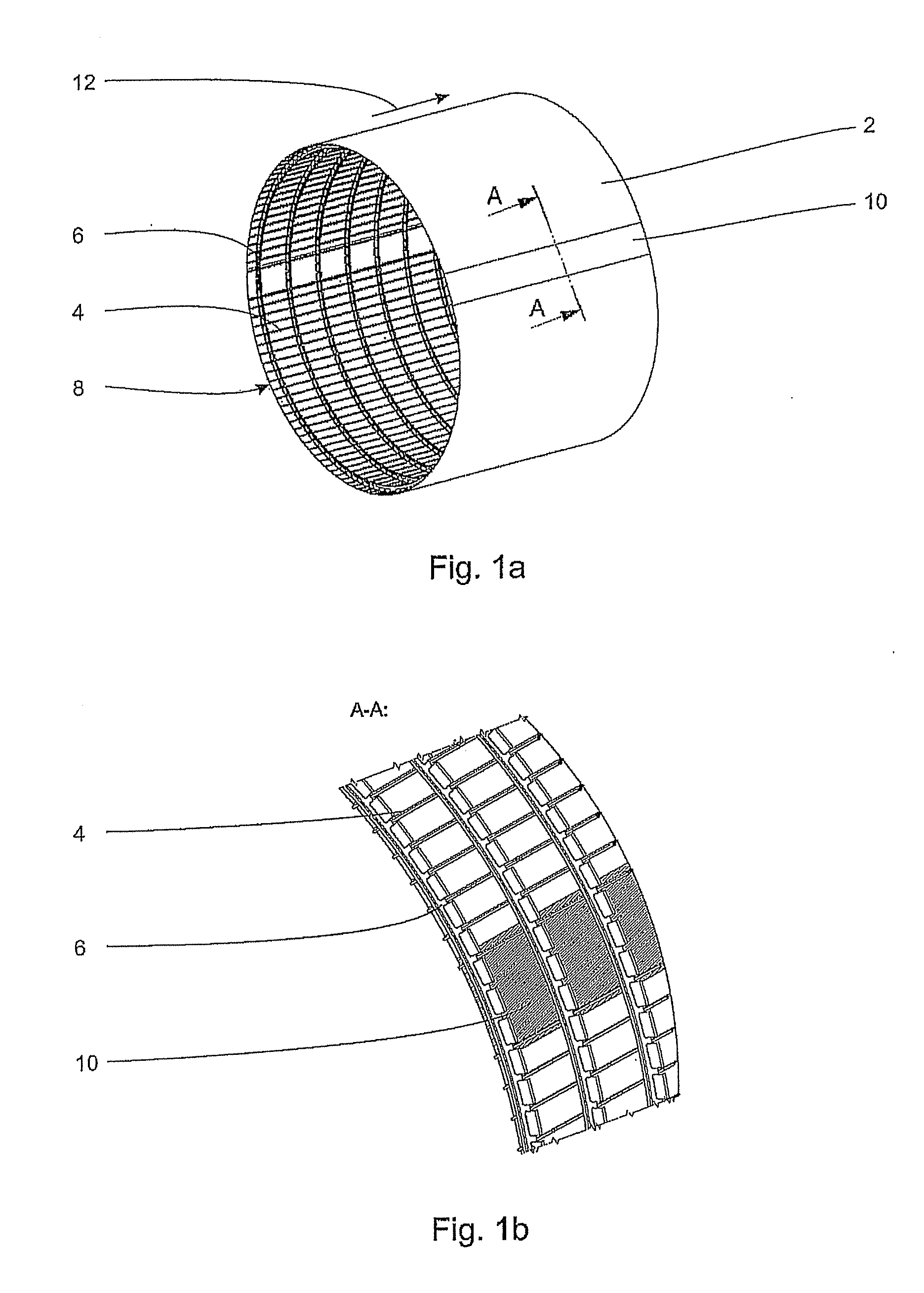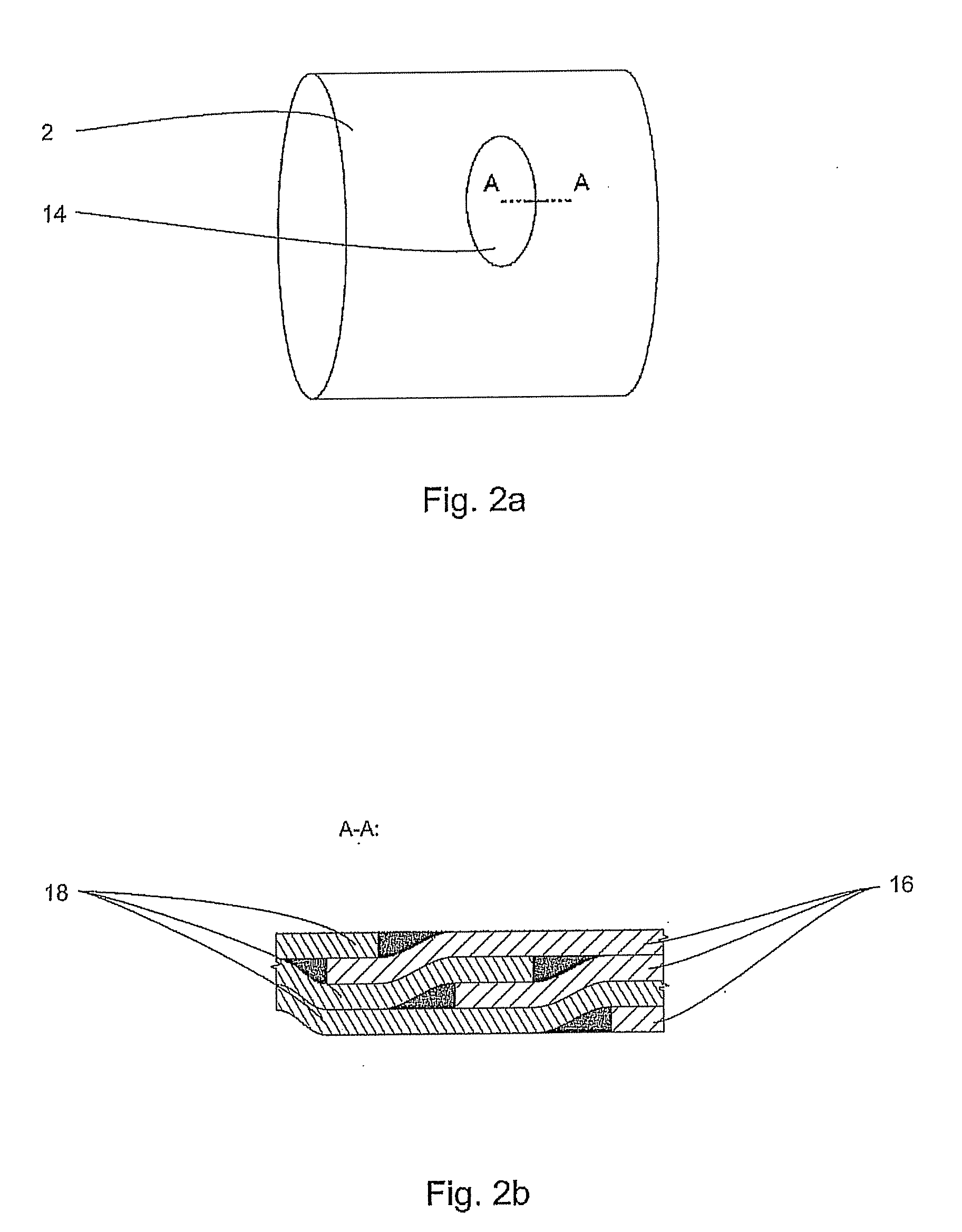Load-supporting and damage-tolerant laminated aircraft window
a laminated aircraft window and load-supporting technology, applied in the field of vehicle windows, can solve the problems of unnecessary window frame guiding these loads around the window, and achieve the effect of reducing or eliminating the disadvantages
- Summary
- Abstract
- Description
- Claims
- Application Information
AI Technical Summary
Benefits of technology
Problems solved by technology
Method used
Image
Examples
Embodiment Construction
[0021]The portion of an aircraft fuselage 2 shown in FIG. 1a has by way of example an arrangement of stringers 4 for longitudinal reinforcement and formers 6 for transverse reinforcement of the fuselage 2. The stringers 4 and formers 6 are arranged on the inside of the skin 8 of the aircraft fuselage 2 and are attached thereto. This illustration of an aircraft fuselage 2 produced by the barrel construction method is to be understood merely as an example and is not to be interpreted as a restriction of the invention. The modes of operation and advantages of the invention described in the following are also conceivable in connection with alternative fuselage construction methods and any fuselage materials which can render superfluous the presence of, for example stringers or other strengthening or reinforcing components.
[0022]Furthermore, in the selected example, an aircraft window 10 according to the invention is integrated into the skin 8 and has a strip-like, oblong shape and exten...
PUM
| Property | Measurement | Unit |
|---|---|---|
| transparent | aaaaa | aaaaa |
| refractive index | aaaaa | aaaaa |
| structure | aaaaa | aaaaa |
Abstract
Description
Claims
Application Information
 Login to View More
Login to View More - R&D
- Intellectual Property
- Life Sciences
- Materials
- Tech Scout
- Unparalleled Data Quality
- Higher Quality Content
- 60% Fewer Hallucinations
Browse by: Latest US Patents, China's latest patents, Technical Efficacy Thesaurus, Application Domain, Technology Topic, Popular Technical Reports.
© 2025 PatSnap. All rights reserved.Legal|Privacy policy|Modern Slavery Act Transparency Statement|Sitemap|About US| Contact US: help@patsnap.com



